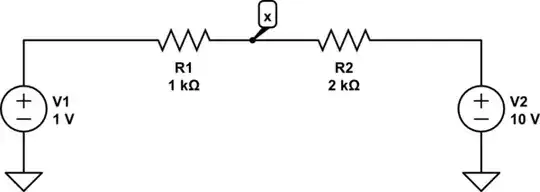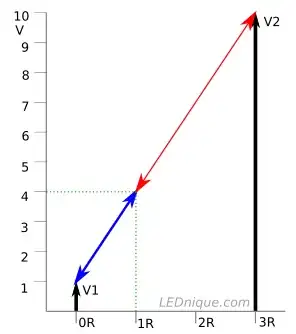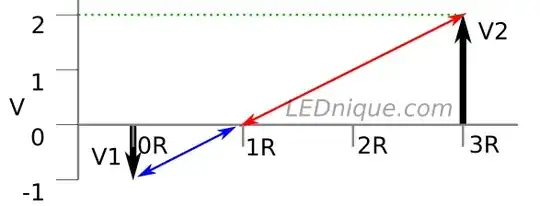Usually I don't care about algebra and just focus on the functionality. However, below circuit form appeared so many times in last few days in op amps that I thought of memorizing it by heart.
From my limited op amps study so far, it seems the entire op amp analysis boils down to figuring out the voltage at point \$\text{x}\$ shown in the diagram.
Working the equations using superposition gave a nice symmetry:
$$V(x) = \frac{V_1R_2 + V_2R_1}{R_1+R_2} = \frac{\left<V_1,V_2\right>\cdot \left<R_2,R_1\right>}{R_1+R_2}$$
If we think \$R_2, R_1\$ as weights, then \$V(x)\$ is the weighted average of \$V_1,V_2\$. It seems \$R_2\$ controls \$V_1\$ and \$R_1\$ controls \$V_2\$. This is beautiful and I'm dying to know if this symmetry has a nice physical explanation. Thanks!

simulate this circuit – Schematic created using CircuitLab
Few observations:
- When \$V_1=V_2=V\$ above formula gives \$V(x) = V\$. This means the entire branch including \$R_1, R_2\$ and every other point float to voltage \$V\$. Doesn't matter what \$R_1, R_2\$ are. This is used in instrumentation amplifiers to amplify AC while perfectly grounding common mode.
- \$x\$ will be virtual ground when the average value is \$0\$

